FloraGoGo is an app-based startup that lets anyone have flowers bouquets.

Project Date: September 2020 Platform Web: Android App My Role: UX Designer UI Designer Design Tools: Sketch Invision, pen and paper Deliverables UX:Finding Interviews, Scenarios, User Journey, Site Map, User Flow, Persona, Usability Testing, Wireframes, Prototype Low & Hight Fidelity
Overview
FloraGoGo is an app-based startup that lets anyone have flowers, bouquets, and other floral arrangements delivered to anyone within an hour. They currently operate in NYC, SF, and Atlanta. Users create an account, choose their delivery location, select a delivery time, and can then choose from a variety of products. The app partners with local florists, who are able to “claim” a new order whenever it comes in. They then prepare the order and deliver it to the recipient within the specified timeframe.
Project Constraints
- Users must be able to sign up quickly via Google or Facebook authorization
- Users must be able to search and filter products by price, style (bouquets, vases, other arrangements), flower type, and color
- The client would like you to incorporate some form of “order status” tracker for users to see where their order is in the delivery process (Received, Preparation, Delivery
Customers Experience Goals
The process of selecting delivery location, delivery time, and product seamless and intuitive, they think users will choose them over the competition. It is important that users be able to quickly create an account in just 1 or 2 clicks, and then select their delivery location and time instantly. From there, the available products would show up on their screen and be incredibly easy to search, filter, and ultimately select.
Finally, they need an intuitive confirmation and payment screen that gives the purchaser confidence that their product will arrive on time and in great condition
What I did?
- Stakeholder interviews
- User Interviews
- Setting goals and objectives
- Persona
- Scenarios
- User journey
- Site map
- Creating wireframes
- usability testing
- Competitive Analysis
- Low-fidelity Prototypes
- High fidelity prototypes
Discovery Research
I have conducted 8 user interviews in order to understand the target audience better. I found the following these top fidnings.
Findings
- Some of the Users are used to going direct to a florist because they can choose, color, type of flowers, amount of flowers, and they feel contact with a person.
- Send flowers is common for relatives and important person, birthday, celebrations, anniversary, graduation,
- Users use to plan 1 week before and some occasions the someday, and Mothers day or Valentine might be a crazy day and they have fewer options,
- The most important things for them definitely are the vase, kind of flower, color and Leave a message for their relatives
- Mostly want to customize and filter options as they use to do when they order delivery food.
Competitive Analysis

Findings
I conducted a competitive analysis to methodically identify redundancies + opportunities. Our competitors had:
- All have Categories of Celebration
- In some of the cases they don’t have the option to register which allow making the purchase rapidly
- Filter options in general although they have different ways to do it and some of the cases are confusing overall when they left breadcrumbs
- All have plants also as delivery
- Mostly don’t have a custom arrangement, which might be an opportunity to increase sales,
- Same day Delivery is a good point for all
- Contact phone is not considered for some of them
- FAQs is an opportunity to give recommendations about the type of flowers according to the occasion.
User Survey
User surveys helped to define the problem so that the solution is informed with insights instead of assumptions, in addition, helped me get a lot of feedback at once.
I conducted a User survey to 15 persons and this is the following Top findings for User Surveys

Affinity Diagram
Affinity diagram helps me to gather large amounts of data and organize them into groups and themes based on their relationships. This process is a good resource in order to group data gathered during research or ideas generated during Brainstorms.

Synthesis
Having our research and information I synthesized information Creating persona in order to know the person who is going to use our product and next to the team we start to write the ideas we consider should have our development.
Persona
Persona are fictional characters, which was created based on our research in order to represent our user. Persona help us to understand User needs, experiences, behavior and goals.

User Journey Map
The user journey map allowed me to visualize the process that a person goes through in order to accomplish a goal in this case the process the person goes through to get a flower bouquet for a relative or significant person.
In its most basic form, journey mapping starts by compiling a series of user actions into a timeline. Next, the timeline is fleshed out with user thoughts and emotions in order to create a narrative. This narrative is condensed and polished, ultimately leading to a visualization.

Scenarios
User scenarios help to show how users might act to achieve a goal in a system or environment. Make me understand users' motivations, needs, barriers and more in the context of how they would use a design app, and to help ideate, iterate and usability-test optimal solutions. In this case we have 3 scenarios.
User wants to send flowers Bouquet to his new dating

User wants to send flower bouquet for wedding anniversary to his wife

User need to send flower bouquet to her aunts on their birthday's
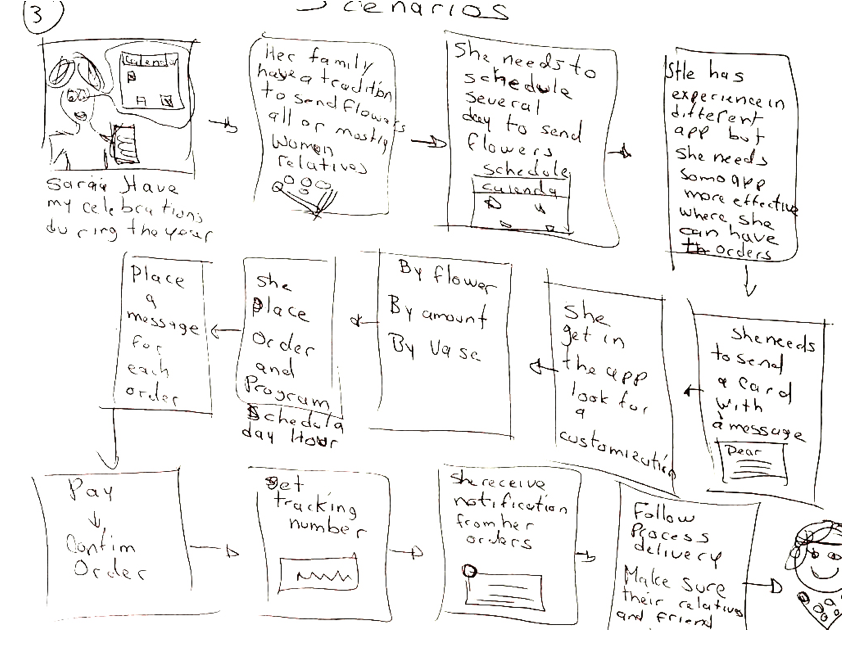
Design
Having synthesis I could start to translate our research on flows, screens, structure, visuals, and prototypes.
Site map
I created a site map that helps to plan out our website. Contain all the pages and shows how the user access and include all the subpages.
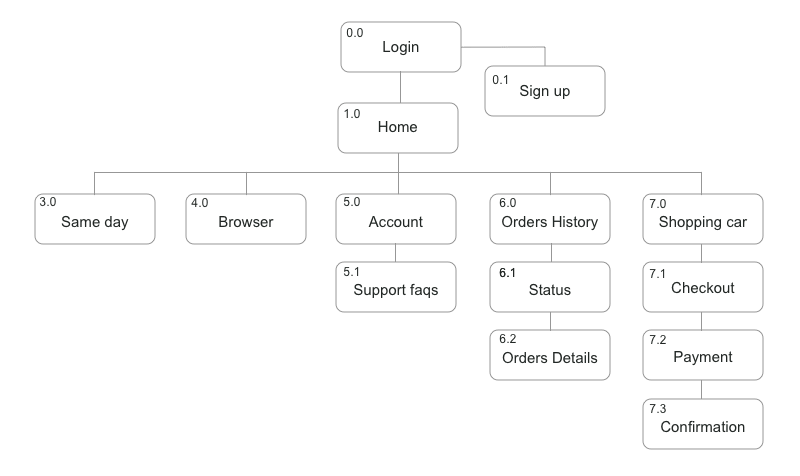
User Flow
I created a user flow that takes them from their entry point through a set of steps to a successful outcome and final action.

Sketch
With a paper prototype, We could test early design ideas at extremely low cost. We fixed problems before to start the wireframe process This is the first approach to the problem that allowed me to change and define the user interface architecture.

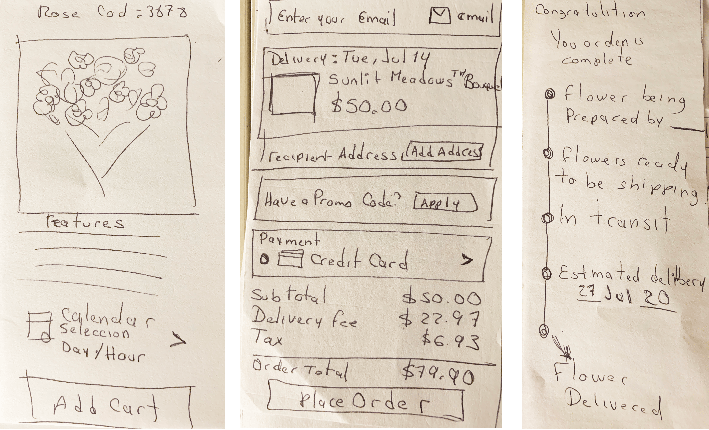
Wireframes
Wireframing as low-fidelity prototyping allowed rapid iterative in order to usability test and get insight early and get problems early.

Testing Findings
- Users want to see pictures of flowers bouquets, kind of products, by categories not just for options
- Users want to have options to look for categories but they don’t want to constrains to look for bouquets by filters
- Users want to choose bouquets and place in the shopping car without constrains
- Users want to checkout until they decide what kind of bouquet
Moodboard
After establishing the visual language, I created moodboard to have an overview of style items, typography and color that our client based on their principals brand

Mockup High Fidelity
High fidelity prototype is an integral part of the design process, It allows us to turn a vision into something tangible in order to test our hypothesis with real users. Also allows experimenting and explore various approaches to an idea before selecting the one that is most valuable both from a business and user standpoint. The goal is to ensure that their product satisfies the user's needs. Prototyping allows us to explore and validate ideas before investing too many resources.

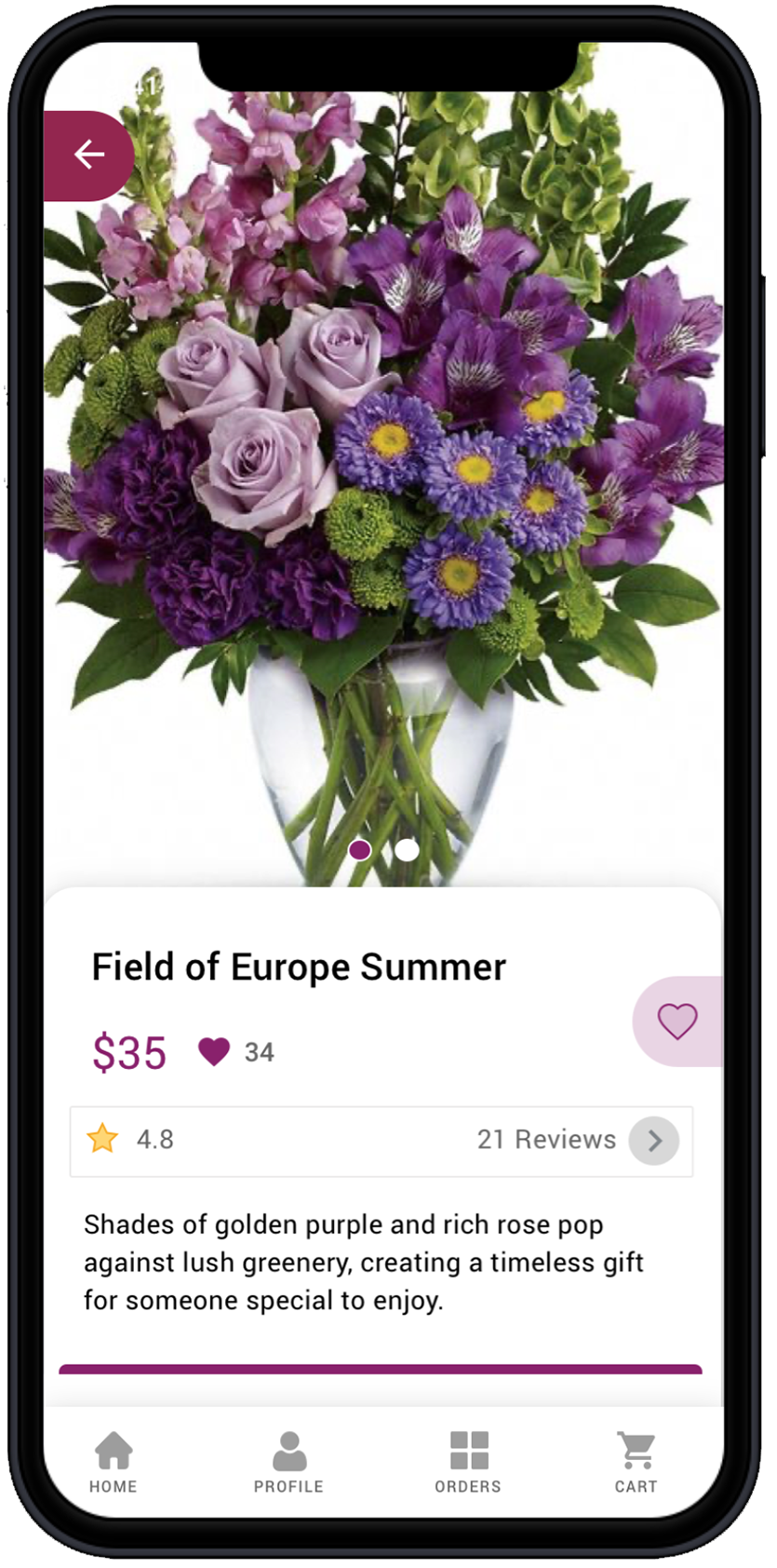
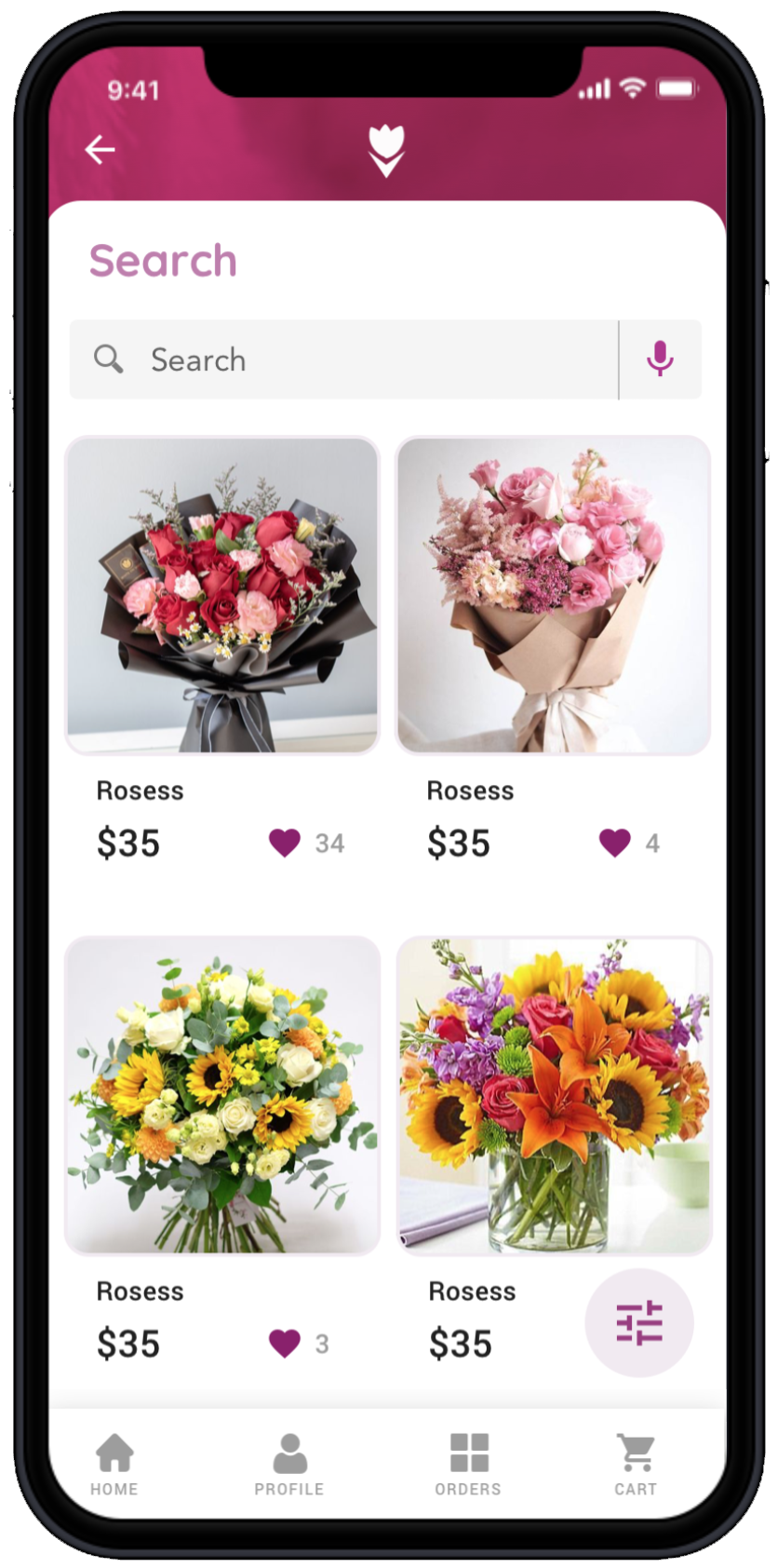



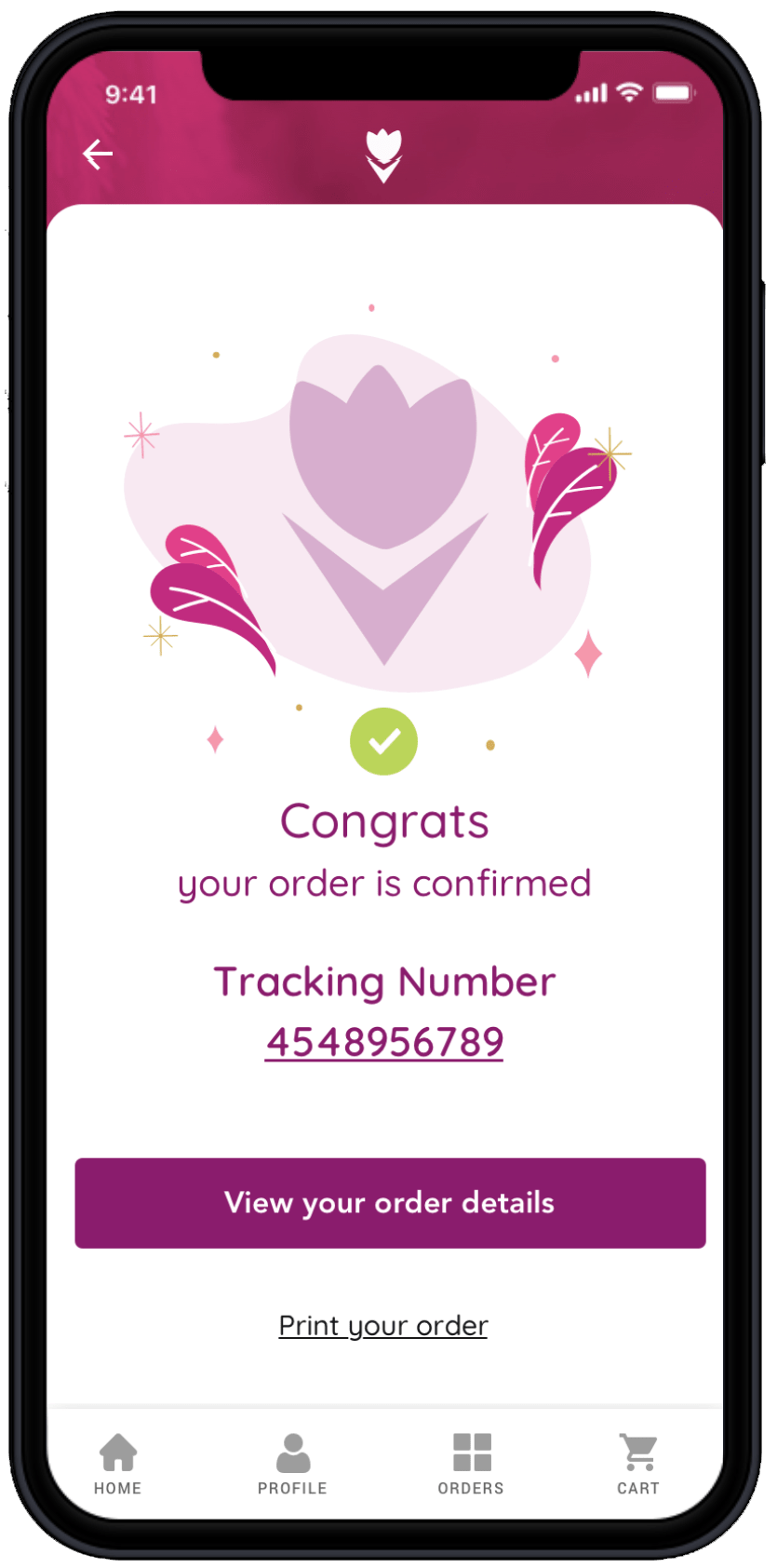
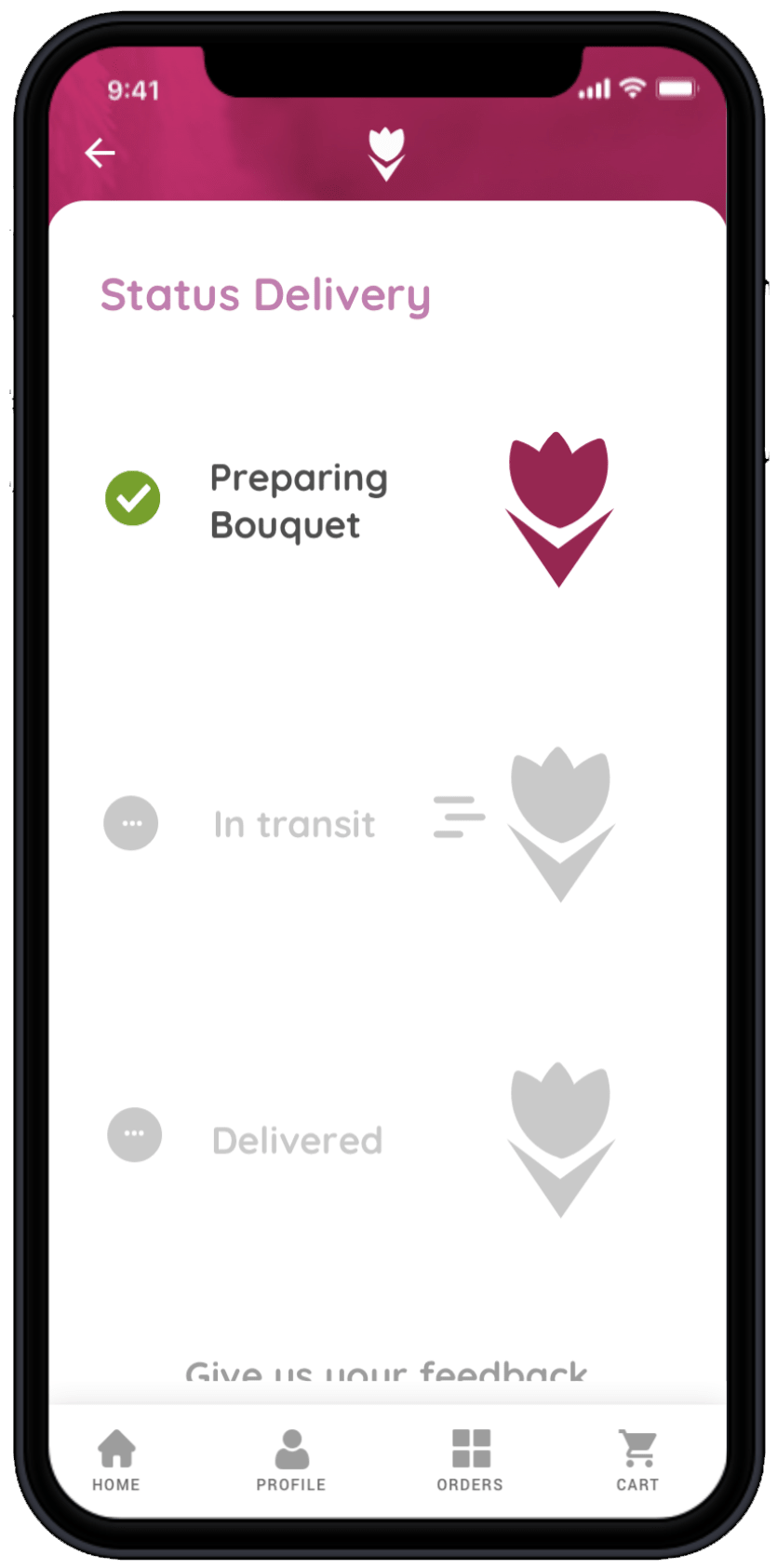
Testing Findings
Having 3 iterations I got the following findings:
- Users found simple the process to make purchase
- Users found the experience Easy, Useful and Accessible in constrast the other apps
- Users like to see many flowers bouquet and place into the cart then finally they make a decision based on these and comparing them.
- A frequent user always wants to have all the orders any time easy to find